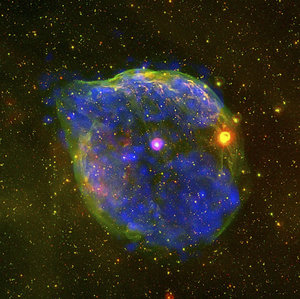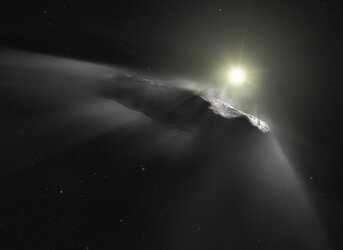Accept all cookies Accept only essential cookies See our Cookie Notice

About ESA
The European Space Agency (ESA) is Europe’s gateway to space. Its mission is to shape the development of Europe’s space capability and ensure that investment in space continues to deliver benefits to the citizens of Europe and the world.
Highlights
ESA - United space in Europe
This is ESA ESA facts Member States & Cooperating States Funding Director General Top management For Member State Delegations European vision European Space Policy ESA & EU Space Councils Responsibility & Sustainability Annual Report Calendar of meetings Corporate newsEstablishments & sites
ESA Headquarters ESA ESTEC ESA ESOC ESA ESRIN ESA EAC ESA ESAC Europe's Spaceport ESA ESEC ESA ECSAT Brussels Office Washington OfficeWorking with ESA
Business with ESA ESA Commercialisation Gateway Law at ESA Careers Cyber resilience at ESA IT at ESA Newsroom Partnerships Merchandising Licence Education Open Space Innovation Platform Integrity and Reporting Administrative Tribunal Health and SafetyMore about ESA
History ESA Historical Archives Exhibitions Publications Art & Culture ESA Merchandise Kids Diversity ESA Brand Centre ESA ChampionsLatest
Space in Member States
Find out more about space activities in our 23 Member States, and understand how ESA works together with their national agencies, institutions and organisations.
Science & Exploration
Exploring our Solar System and unlocking the secrets of the Universe
Go to topicAstronauts
Missions
Juice Euclid Webb Solar Orbiter BepiColombo Gaia ExoMars Cheops Exoplanet missions More missionsActivities
International Space Station Orion service module Gateway Concordia Caves & Pangaea BenefitsLatest
Space Safety
Protecting life and infrastructure on Earth and in orbit
Go to topicAsteroids
Asteroids and Planetary Defence Asteroid danger explained Flyeye telescope: asteroid detection Hera mission: asteroid deflection Near-Earth Object Coordination CentreSpace junk
About space debris Space debris by the numbers Space Environment Report In space refuelling, refurbishing and removingSafety from space
Clean Space ecodesign Zero Debris Technologies Space for Earth Supporting Sustainable DevelopmentLatest
Applications
Using space to benefit citizens and meet future challenges on Earth
Go to topicObserving the Earth
Observing the Earth Future EO Copernicus Meteorology Space for our climate Satellite missionsCommercialisation
ESA Commercialisation Gateway Open Space Innovation Platform Business Incubation ESA Space SolutionsLatest
Enabling & Support
Making space accessible and developing the technologies for the future
Go to topicBuilding missions
Space Engineering and Technology Test centre Laboratories Concurrent Design Facility Preparing for the future Shaping the Future Discovery and Preparation Advanced Concepts TeamSpace transportation
Space Transportation Ariane Vega Space Rider Future space transportation Boost! Europe's Spaceport Launches from Europe's Spaceport from 2012Latest

Inflating Sh2-308
Thank you for liking
You have already liked this page, you can only like it once!
The NASA/ESA Hubble Space Telescope still has a few tricks up its sleeve in its task of exploring the Universe. For one, it is able to image two adjacent parts of the sky simultaneously. It does this using two different cameras — one camera can be trained on the target object itself, and the other on a nearby patch of sky so that new and potentially interesting regions of the cosmos can be observed at the same time (these latter observations are known as parallel fields).
This image shows part of a bubble-like cloud of gas — a nebula named Sh2-308 — surrounding a massive and violent star named EZ Canis Majoris. It uses observations from Hubble’s Advanced Camera for Surveys, and is the parallel field associated with another view of the nebula produced by Hubble’s Wide Field Camera 3.
EZ Canis Majoris is something known as a Wolf-Rayet star, and is one of the brightest known stars of its kind. Its outer shell of hydrogen gas has been used up, revealing inner layers of heavier elements that burn at ferocious temperatures. The intense radiation pouring out from EZ Canis Majoris forms thick stellar winds that whip up nearby material, sculpting and blowing it outwards.
These processes have moulded the surrounding gas into a vast bubble. A bubble nebula produced by a Wolf-Rayet star is made of ionised hydrogen (HII), which is often found in interstellar space. In this case, it is the outer hydrogen layers of EZ Canis Majoris — the bubble — that are being inflated by the deluge of radiation — the air — coming from the central star. The fringes of these bubbles are nebulous and wispy, as can be seen in this image.
-
CREDIT
ESA/Hubble & NASA, CC BY 4.0 -
LICENCE
CC BY 4.0 INT or ESA Standard Licence
(content can be used under either licence)

Hubble solves mystery of monster star's dimming

Wolf-Rayet bubble

A smouldering star

Star-circling bubble of gas















 Germany
Germany
 Austria
Austria
 Belgium
Belgium
 Denmark
Denmark
 Spain
Spain
 Estonia
Estonia
 Finland
Finland
 France
France
 Greece
Greece
 Hungary
Hungary
 Ireland
Ireland
 Italy
Italy
 Luxembourg
Luxembourg
 Norway
Norway
 The Netherlands
The Netherlands
 Poland
Poland
 Portugal
Portugal
 Czechia
Czechia
 Romania
Romania
 United Kingdom
United Kingdom
 Slovenia
Slovenia
 Sweden
Sweden
 Switzerland
Switzerland
























